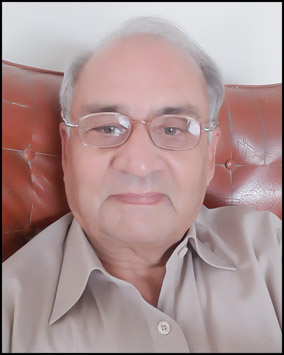Repeated ads on TV channels regarding the Human Papillomavirus (HPV) vaccination for girls between 9 and 14 years reminded me of a story. Way back in the early seventies, in 1972 to be precise, polio vaccine drops were not only unavailable in the public sector but were unheard of. I had to travel all the way from Peshawar to Rawalpindi to buy them from a famous chemist of that time, “Drug House” on Mall Road, for a substantial amount, as prescribed for my elder son by a pediatrician who had recently returned from the UK.

Dr. Munawar Aziz
The point I want to make is that instead of spending huge amounts on TV ads about the HPV vaccine which may create doubts as to why there is a sudden upsurge in such advertisements and why the vaccine is being given free it would be wiser to invest in awareness campaigns. The dictum, “Nothing is free; somebody has to pay,” comes to mind.
There should be a plan to conduct seminars for medical personnel, both in the public and private sectors, regarding the HPV vaccine. The public should be advised to consult their healthcare providers for awareness and to address their concerns about it. Health providers, on their part, should educate their patients and their families about the benefits of the vaccine. Anything suddenly publicized repeatedly and offered free of charge is often viewed with suspicion in our society.
Human Papillomavirus (HPV) is one of the most common viral infections transmitted through sexual contact. There are more than 100 types of HPV, and while many infections resolve naturally, some strains can cause serious health problems. High-risk types of HPV are the leading cause of cervical cancer, as well as cancers of the anus, throat, vulva, vagina, and penis. Low risk strains may cause genital warts, which are not life threatening.
The HPV vaccine provides an effective preventive solution. It protects against the most dangerous HPV strains, significantly reducing the risk of cervical and other HPV related cancers. Widespread use of the HPV vaccine has already shown remarkable success in reducing HPV infections and related diseases worldwide.
The age group of 9 to 14 years is chosen in the West because, in those societies, many girls experience premarital sex at that age, and it is also believed that the immune response is stronger after vaccination at that stage. In our culture, this practice is either nonexistent or negligible; therefore, the age limit can be reconsidered or extended, as parents are often skeptical about their young girls being subjected to such vaccines.
Recommendations:
- Conduct seminars and corner meetings with medical personnel to highlight the issue of cervical cancer in females and other diseases caused by this virus, both in males and females. Private practitioners, especially gynecology and obstetrics staff, should be involved in counseling patients to clear doubts in the minds of parents.
- The vaccine should be given to couples (both male and female) before marriage, not just to females, since males are also affected.
- The vaccine should be available free of cost in public sector hospitals and basic health units, but it should also be available in the private sector on payment. Anything given free in our society has little impact, especially if its benefits are not visible to the naked eye.
Though HPV vaccination is scheduled in the year 2026 in KP but timely measures are necessary and always rewarding.
- Dr. Munawar Aziz
Abbottabad, Pakistan.
aziz.munawar@gmail.com



